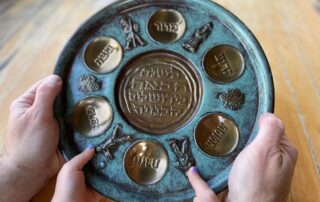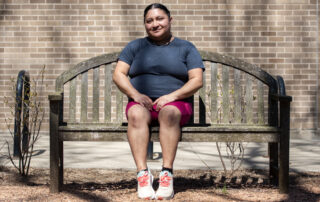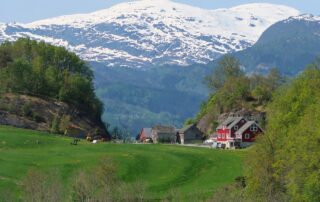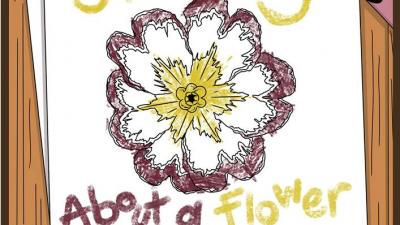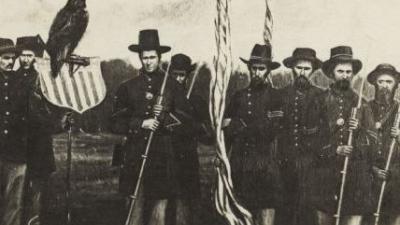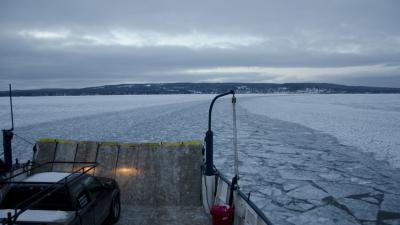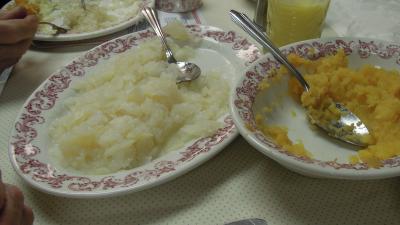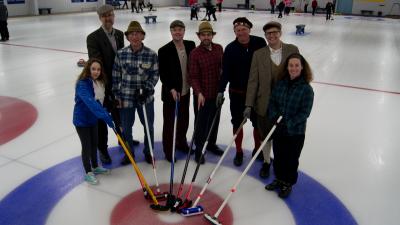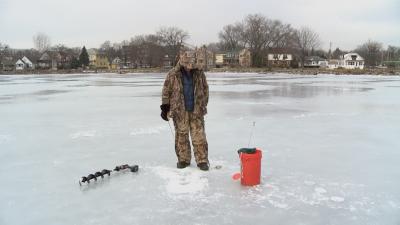In the spring of 1970, John and Kate Grosman planted a few rows of red pine in honor of their newborn son, Christopher. “I borrowed my dad’s farm tractor and we furrowed it, and did the planting that way,” recalls John.
Two years later, they planted more red pine for their second son, Andrew. “We thought it was neat to just start this new life parallel to these new lives otherwise starting,” says John.
John was a forester, and the trees contained a metaphor for life. “The trees that will succeed on this piece of property will adapt to the place that they are plugged in to grow and compete and strive with their fellows on this little slice of property. There are parallels to kids and young adults growing and finding their way in the world.”
The trees that were barely visible in old photos eventually grew taller than the boys. “You probably measure your kids height on a wall somewhere, but same concept,” says Kate. “Only it’s the trees and their growth.”
Over time, the boys grew up and started families of their own. “Then the grandchildren started coming, so we began planting for them,” says John.
John says the factors that determine whether a tree or a child thrives in their environment are the same. “You have an influence and a design for how they begin and grow. You create an environment for them hopefully to come to be independent and move off into the world.”
For their most recent grandchild, Lily, they had to thin out some of her father’s pines to provide enough sunlight. “For Lily, the process started we picked out a piece that didn’t have much for ground cover, so not a lot of competition,” says John. “But it was in the shade of Dad’s trees, and his trees were in need of thinning.”
So there are now stumps among Christopher’s trees, allowing light to shine on his daughter Lily’s white oaks. “This one was harder for me,” says Kate, “because you know you planted it, so now to have to cut it, which I know is the healthy evolution of the forest, you go, ‘Really?’”
‘That is part of the deal and lesson too,” argues John. “I mean we are all here for a moment in time. Finite period of time.”
The reminders of life and death are present in the trees. Not far from the other grandkid’s trees are some red oaks that are growing tall all by themselves. “We had a little granddaughter that was born premature and passed shortly after birth,” says John. “Emma would have been about 12 by now.”
“(Her trees are) a reminder that she’s thought of,” says John. “There’s a little bit of wild rose and a few forget-me-nots spudded in here too.”
John’s grandfather Mike Grosman was Polish, and emigrated around the turn of the century. He made his way to northern WIsconsin and bought land outside Sugar Camp. “It was very much a cut over scene that they cleared then and made over time made a dairy farm in the early 1900’s.”
John’s father spent his teenage years trying to clear this land of trees and stumps. “He had such an investment in time and blood sweat and tears making this a farm that I’m not sure he’d totally embrace what we’re doing now to make it go back to woods.”
In a century it went from forest to farm and now back to forest. “These trees are here for a moment in time. They live longer than we do and you have the sense that they live eternally but in fact, they are transitory just like we are,” says John. “Is it another 50 years? 75 years? Is it 200? I don’t know.”
The one constant has been the Grosman family, best represented by a Polish phrase on the outside of the cabin. “It says Grosman since 1904 and still ours.”
John and Kate hope their grandkids will eventually feel the same connection to this land as they do. “There’s a sense of pride and belonging and that’s important,” says Kate.
“The land is not something that belongs to you, you belong to it,” says John. “And to the extent that that thought can be captured in what we hand off to these kids and their trees, I think that’s a neat thing.”

